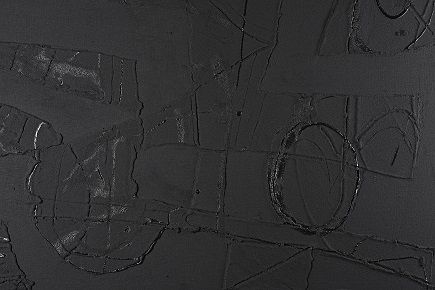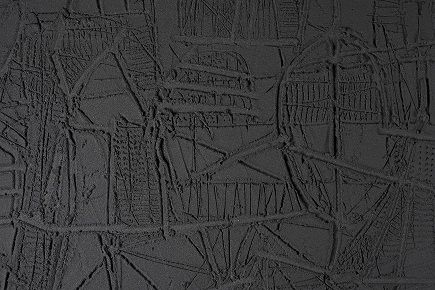ARTISTS
Luka Popič [SI]
Focus: Painting, Printmaking
Born in 1956 in Podgorje/Slovenj Gradec. Lives and works in Podgorje/Slovenj Gradec.
Untitled, tetraptych, acrylic, canvas, 240 x 70 cm
“ Luka Popič’s work is characterised by a relentless search for new expressive possibilities and a conscious avoidance of the motifs and techniques that could entice him into a closed system of creative manner. Two decades ago, when he first presented himself to the visual arts audiences in a more ambitious manner, he was an emphatically figurative artist; however, in his further artistic explorations, he renounced this and yielded himself to experiment and the search for a visual address that fascinates and persuades himself as the author and us as the spectators with an immediate, occasionally even raw power of elemental visual energy. Playing through numerous painterly and graphic techniques – from the glazing of colours to the painting of saturated colours, from flat and relief collages to the graphic techniques of gravure printing and the unique collagraph printing and monotypes – his images have moved into the field of liberated, pure visuality. While individual realisations still summarise immediate impressions from the environment and they are loosely tied to recognisable motifs, they are, first and foremost, independent visual sensations, underscored by the tangible materiality of painterly or graphic texture. The roughly whirling painterly “magma”, which Popič applies – using various, even non-conventional painterly instruments – to canvas or wooden plate in the never ending play of shadow and light, dominates the entire surface in sovereign manner. The accentuated materiality is enhanced further with the use of various non-painterly materials that throw the surface of the image into relief. The rough, gritty structure of the image is creased and furrowed by numerous incisions and scars and by the informel-like spread-out amoebic structures that breathe in the balanced compositions once we can no longer add or take away anything.
Popič’s painting is focused on contemplating how colour and texture, and the light that is caught in them, define space, time and form. At the same time, he is searching for ways to circumvent the three premises and combine them into a single feeling, a single expression, which is a direct reflection of the body touching the matter … with one’s fingertips or the tip of the brush. Without the entirely conscious control, he explores the fine line between the metaphysical and the real and tries to get to the heart, the key issue of perception: how to use the senses to interpret cogently both our sensations and the mystery of the material in the physical world that surrounds us.
Not unlike the works by the great masters of American abstract expressionism, Popič’s paintings try impulsively to draw closer to the ultimate truths of the world and our place in it. This goal, unattainable, of course, may seem pretentious, while the interpretation sounds exaggerated and pompous; however, what counts here is the conscious effort and persistence on a journey that occasionally seems only an inkling of something persistently out of reach. Is it not that the longing to surpass the existing and to search for the ultimate constitutes the unique mission of art, even while it is obvious to everyone that such a journey can never come to a satisfying end? Hence, Popič’s images are beyond stories about specific things and beyond narratives about individual people. They speak to us in an apparently sparing visual language, which is their most difficult and, at the same time, most delicate quality. The rhythmically agitated and sensitive, rounded and balanced monochromatic image consciously avoids (recognisable) forms and follows the expressive and spontaneous flow of visual thought. As the author, Luka Popič addresses us – consciously, albeit usually through psychic automatism – in an entirely direct manner: with gesture and texture. In turn, the liberated image with the rhetorical effects of haptics, in addition to the emphatic physical presence, reflects only the artist’s basic existential mood.”
Marko Košan, curator, Koroška Gallery of Fine Arts [KGLU] – Museum of Modern and Contemporary Fine Art, Slovenj Gradec
SUK II, detail, acrylic, canvas, 132 x 200 cm
SUK III, detail, acrylic, canvas, 132 x 200 cm
(Photos: Tomo Jeseničnik)



